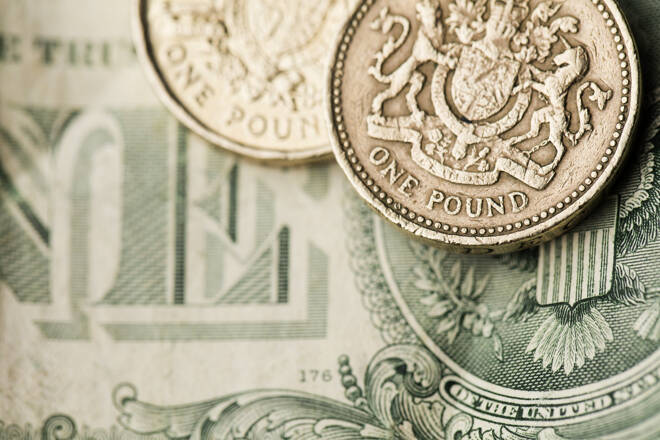Strong British Data Gives the BoE More Room to Hike
By:
Record average weekly earnings and inflation as expected continue to boost the pound.
There’s been a range of mostly positive data from the UK since late last week which is part of the reason for the pound’s continued multi-year highs against some currencies such as the yen and New Zealand dollar. This article summarises the releases and evaluates the potential impact on the Bank of England’s policy at upcoming meetings and on the charts of cable and pound-yen.
The British job report on Tuesday 15 August showed slightly accelerating unemployment at 4.2% and a positive figure for claimant count change against expectations although last month’s figure for claimants was revised down. However, the highlight of the job report was extremely strong annual growth in average weekly earnings:
8.2% for the total figure was the highest in more than two years, while 7.8% excluding bonus was the highest ever recorded. These numbers suggest that inflationary pressure in the UK is likely to remain high. Although rates have risen strongly over the last year and seem likely to continue upward, some of the impact is starting to be felt on inflation:
Annual non-core inflation at 6.8% in the UK is the lowest in about 18 months and demonstrates the effects of the BoE’s hawkish policy. However, some of the drop in recent months can be attributed to lower costs of fuel and transport. July saw the first monthly deflation in the UK since January.
The Bank of England meets three more times before the end of the year, with the next meeting on 21 September coming only one day after the Fed’s statement and press conference. As of now, it seems very likely that there’ll be another single hike to the bank rate next month, which would take it to 5.5%.
The primary intrigue over the next few weeks is likely to be less whether there’ll be a double hike, which seems unfavourable at the moment, and more whether support for a 0.5% hike might increase. At the last vote of the Monetary Policy Committee on 3 August, there were two dissenters from the consensus who favoured a double hike.
As the Fed seems nearly certain for now to hold at 5.25-5.5% next month, considering the context of strong progress on driving inflation down, the BoE might overtake its American counterpart in the fourth quarter. Meanwhile the Bank of Japan hasn’t started tightening policy apart from relatively minor tweaks to quantitative easing and ceilings for bonds.
The BoE also seems to be fairly confident of avoiding a recession next year. British quarterly GDP came in unexpectedly positive last week, albeit at a negligible 0.1% growth. The fundamental situation for sterling seems quite positive on the whole. but analysing charts and finding higher probability opportunities is essential given that some uptrends are very mature.
Cable, Daily
Cable seems to be a reasonably good candidate for traders wanting to buy the pound because it’s not close to its high. 9 July’s $1.314 was a high of about 15 months which could be reached again if it’s confirmed that the BoE’s hawkishness will continue and the Fed pause. The key support is the 100 SMA around $1.265, which has been tested twice unsuccessfully so far this month.
The dragonfly dojis from there within oversold and relatively high buying volume considering the season would traditionally suggest buying. Conversely, some reasonably strong catalyst would probably be needed for the price to push back above the 50 SMA from Bands around $1.28. That doesn’t seem likely until the NFP next month, so technical action might dominate in the meantime.
Pound-yen, Daily
Although not quite the same parabolic shape as GBPNZD, buying into pound-yen now would traditionally be seen as excessively risky. The price is at a high of nearly eight years and strongly overbought. However, any correction or retreat from the current high in the immediate future would probably be quite small. That’s because of the strong reaction by buyers late last month as the price made its first serious attempt this summer to push back below ¥180.
Japanese inflation at 23.30 GMT on Thursday 17 August is a critical release which is likely to drive movement by the yen on most of its charts. If the headline figure does indeed decline to the consensus of 2.5%, the yen might continue to lose strength, but that in turn might encourage the Bank of Japan to intervene to support the currency as late last year.
If you’d like to discover more about any of these topics and the prospects for the Fed’s next meeting, register for and join Exness’ upcoming webinar on 11 September at 10.00 GMT. Antreas Themistokleous CFTe, trading specialist at Exness, will discuss the latest news affecting major symbols, analyse gold, forex and more live plus answer all relevant questions.
The opinions in this article are personal to the writer. They do not reflect those of Exness or FX Empire.
About the Author
Michael Starkcontributor
Michael is a financial content manager at Exness. He's been investing for around the last 15 years and trading CFDs for about the last nine. He favors consideration of both fundamental analysis and TA where possible.
Did you find this article useful?
Latest news and analysis
Advertisement
